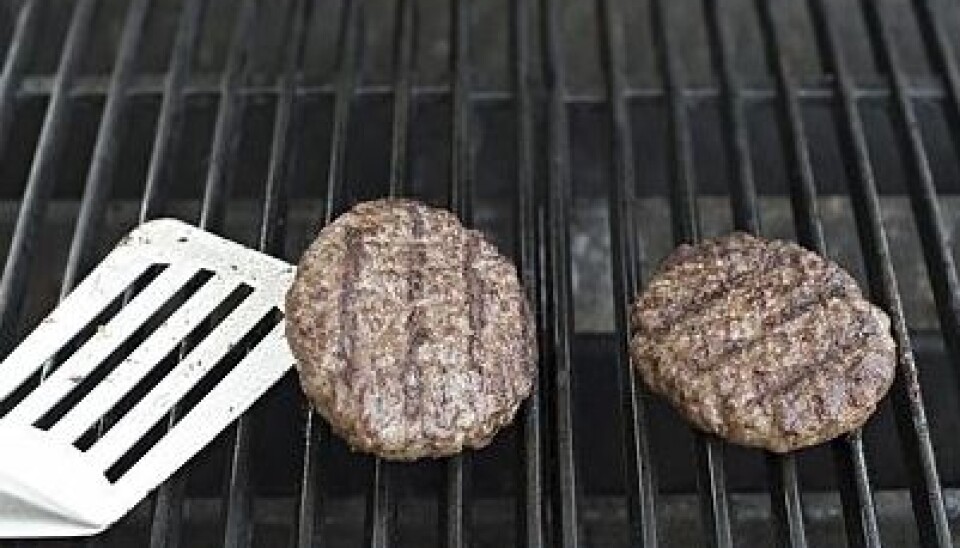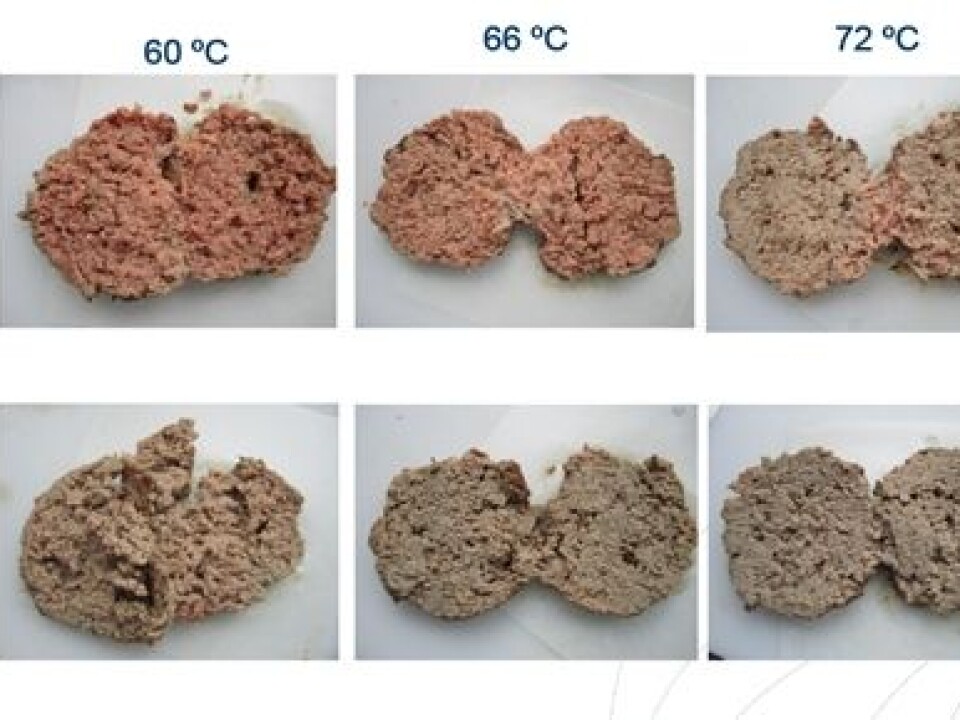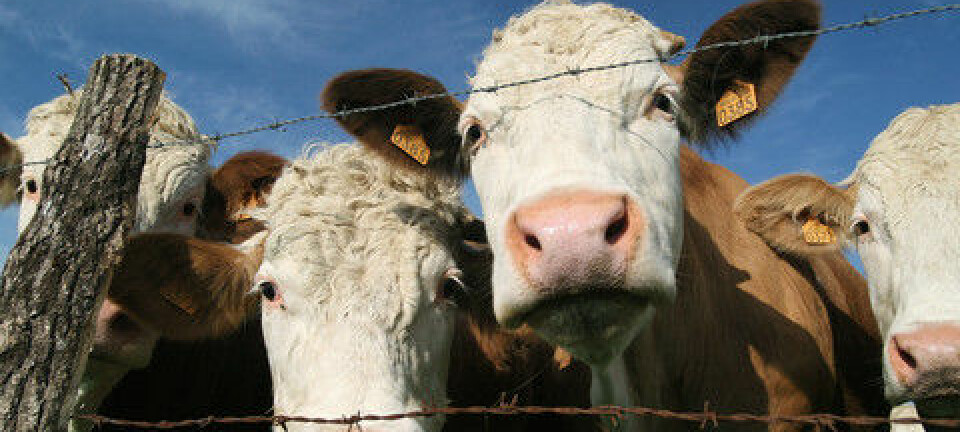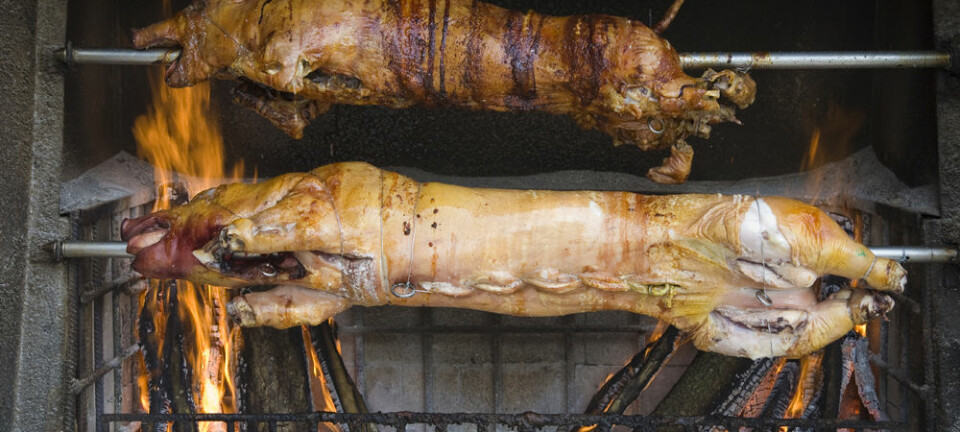This article was produced and financed by Nofima The Norwegian Institute of Food, Fisheries and Aquaculture Research

Colour is not a good indicator for well-cooked meat
To be safe to eat, products made from minced meat must be cooked until they are at least 71 degrees Celcius in the centre.
Denne artikkelen er over ti år gammel og kan inneholde utdatert informasjon.
Meat that has been in contact with oxygen before cooking becomes brown at a lower temperature. This is risky from the food safety point of view.
Meat comes into contact with oxygen when you mince it at home in your own kitchen, but also when you buy minced meat packaged in oxygen-rich atmosphere.
This method is used in several European countries as well as in the USA.
The advantage of an oxygen-rich atmosphere is apparent the first few days after packing, as the meat has a more red colour than with other packaging methods.

A disadvantage is that the colour in the centre of a hamburger cannot be used to measure whether it is thorough cooked or not.
"Consumers should be aware of the risk of eating undercooked products made of minced meat, whether at home or in a restaurant," says Solveig Langsrud, research scientist at Nofima.
Many people judge whether food is cooked by colour
In a research project led by the food research institute Nofima, Norwegian consumers were asked whether they make hamburgers at home from minced beef or steak and how they judge whether a hamburger is thoroughly cooked.
The answers showed that making hamburgers at home is common and that many people use colour as a guide to whether the meat is properly cooked sufficiently. Laboratory tests were also carried out, to look at the connection between killing dangerous E. coli bacteria and colour change during cooking.
"Hamburgers should be cooked until they are at least 71°C in the centre so as to kill bacteria; then they are cooked through and safe to eat," says Solveig Langsrud, Research Scientist at Nofima.
The results showed that, for vacuum packed minced meat, a change in colour from red or pink to brown is a good indication of whether the hamburger has been cooked enough to kill bacteria. This was not the case for oxygen packed meat.
"Meat that has been packed in an oxygen-rich atmosphere already looks cooked through when it reaches 60°C," says Sørheim.
E. coli can cause serious illness
Most bacteria on meat are completely harmless, and with good hygiene and routines at butchers and in shops the level of bacteria on meat will be low. But regardless of the routines, meat is a biological material that can occasionally contain dangerous bacteria.
One example of a bacterium that can cause serious illness, even in low numbers, is Shiga toxin-producing E. coli. Children are particularly vulnerable to these bacteria.
To be completely safe, it is important, in addition to maintaining good kitchen hygiene, to cook hamburgers and other minced meat products long enough to kill these bacteria.
It is important that the consumers themselves take responsibility, especially when preparing home-made hamburgers to children.
"Because consumers make and cook their hamburgers in different ways, it is difficult to give concrete advice about how to ensure that hamburgers made from minced meat packed in an oxygen-rich atmosphere are thoroughly cooked," says Sørheim.
"The laboratory tests showed that it is difficult to measure temperatures during frying or grilling, and neither is there any suitable thermometer for this on sale."


































